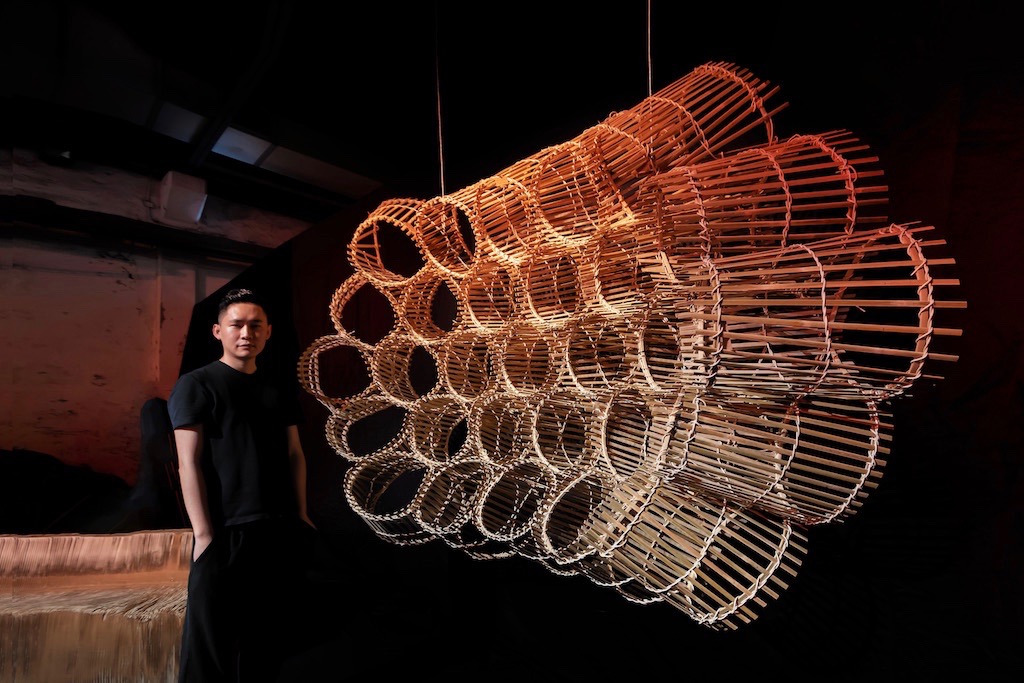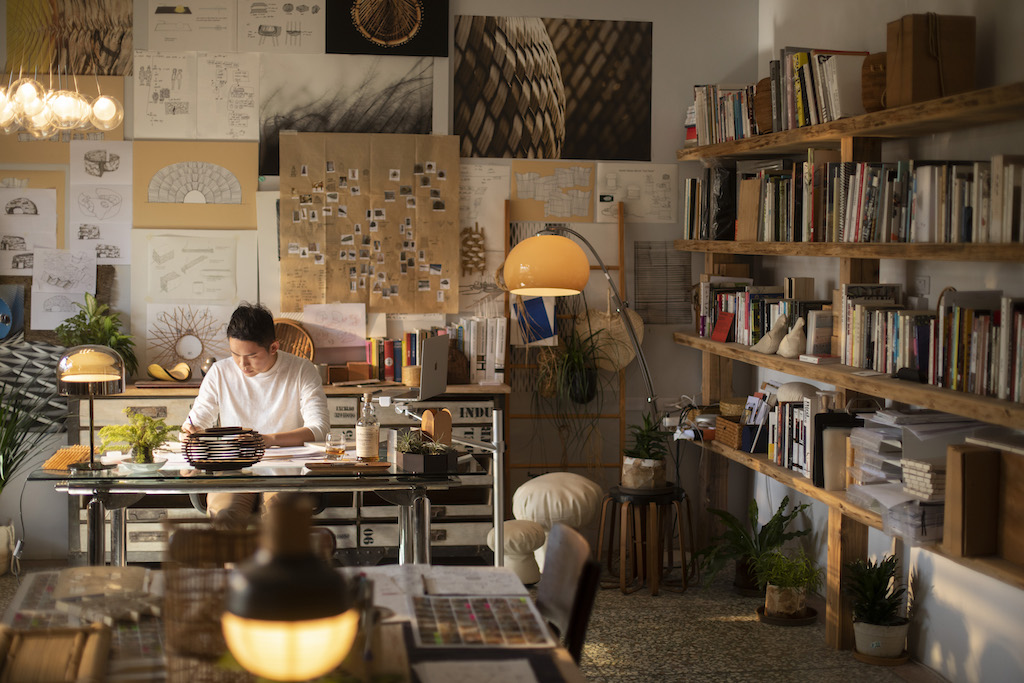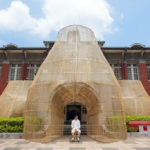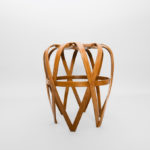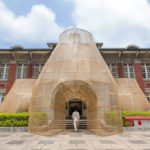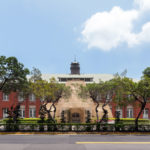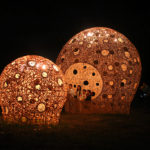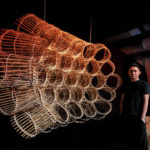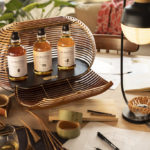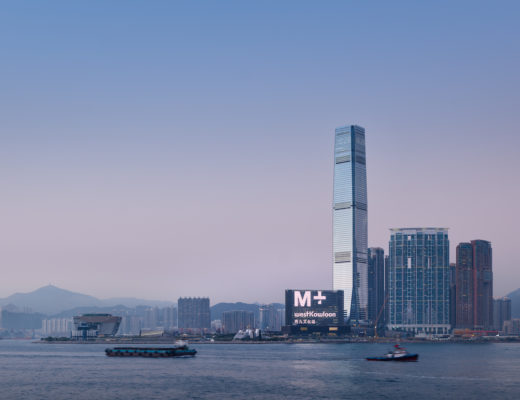There is a certain primitive charm about Taiwanese artist-designer Cheng-Tsung Feng’s works that perfectly balance the divide between heritage, craftsmanship, and evolution. His focus on using organic, sustainable materials such as bamboo and wood for product collections as well as installations provides a glimpse into a new perspective – where design is driven neither by form nor by function but by a natural way of living. In his own words, he is an artist with an old soul in a young body, he is fascinated by exploring the wisdom condensed out of time hidden in traditional utensils. He is reluctant to let go of these intangible assets along with traditional utensils.
DE51GN speaks to the young designer to learn more about his approach to design.

Tea Nest is inspired by a traditional heat preservation teapot set popular among Hakka farmers from WenShui area in Miaoli.
What inspired you to be a designer and an artist?
I studied industrial design at university. Like other classmates, I drew many drafts, learnt basic design theory and practical skills, went to museums, and tried to make something interesting. Later when I did my Master’s in design, I joined a project for the traditional bamboo craft. I am deeply fascinated by these old materials. That was the beginning of my work with bamboo.

The Fish Trap installation in Nantou was inspired by the traditional crafts of the Thao indigenous tribe that lives near Sun Moon Lake, Taiwan’s largest body of water.
You’ve designed several installations that are not just a piece of art – they narrate a story through its materials, community and form. How do you find the inspiration?
I always seek inspiration from local traditional handmade objects. This often involves finding old people who are known to be among the last few people well-versed in that craft. I then learn these process to be able to create objects using that craft by myself, I start to record the process by photographing and use form, material and method – three labels to understand the whole process. Through these three labels, I try to understand the role of materials in the process, the role of form in the process, and the wisdom of incorporating our culture into ordinary objects.

Bamboo installation art called “beside” in the Teng Yu-Hsien Music Culture Park of Qionglin Township (Hsinchu County, Taiwan). The installation is a sculpture, a space for relaxation, and a light lamp.
What is your methodology when you design a new piece? Do you draw upon heritage and then arrive at a contemporary interpretation?
Yes, as I mentioned previously, each object has a different story and production method. I follow the old process step by step to translate them into a new possibility. I inherit these processes by design and learn to create utensils from age-old traditions. In recent years, I have applied handcrafted methods from traditional artifacts into large-scale installations, showcasing the brilliant ancient wisdom hidden in the objects at very different scales and functions. Rebirth is the way to preserve precious traditional culture as an artist.

Cheng-Tsung Feng has collaborated with many civic and cultural authorities on public installations as well as cultural projects with whisky producer Balvenie. By his own admission, bamboo is his preferred material to work with.
“Not only artists and designers, in general, I think Taiwanese people care more about the environment and nature in recent years than in the past, and this is only surging every year. There are some important celebrations and festivals in Taiwan, and we are often invited to these to create outdoor space installation art. We always think about where these demolished works will go when the event ends after the creative conception stage. Some of the installations are dismantled into materials to be sent to schools that can be reused, or open to the public to obtain free of charge and so on.” – Cheng-Tsung Feng
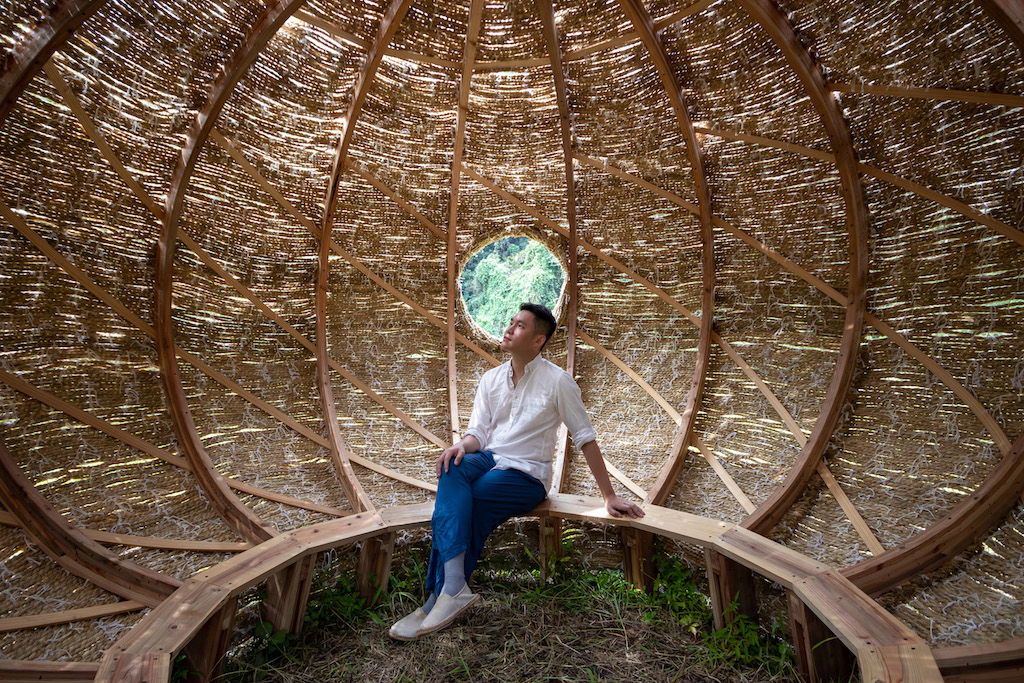
Tea Nest installation is built out of rice straw, cotton yarn and Japanese cedar. The sizeable installation is big enough to welcome people inside. Based on the meaning of the Teapot Nest, which translates as lasting warmth in English, this artwork invites people to come inside and sit around as if bathing in a cup of hot tea. With the smell of rice, it transports you back to the natural life in agrarian Taiwan society in the 1970s.
You work largely with natural materials such as bamboo. Is this a conscious choice? What are the challenges you face while working with such materials?
Sure, the main reason is that it’s the Taiwanese native fibre material. People have been using them to create objects and containers here for centuries, so it’s also important in our traditional way of living. Although what’s more worrying is that the factories and craftsmen are getting fewer when these products have the potential to be produced on a mass scale.
What is your favorite material to work with and why?
I have worked with many materials such as wood, fabric and metal. If I must make a choice among them, I would say bamboo. Because it still has a lot of possibilities, and also easy to get. In fact, thanks to bamboo for giving me enough possibilities that I’ve made a career and living out of it, helping me grow as an artist and creative entrepreneur – I now employ five people who are equally enthusiastic about working with bamboo and natural materials.

Bamboo container that harks back to the traditional and sustainable way of life in the olden days. Cheng-Tsung Feng creates everyday objects using bamboo albeit in a contemporary manner.
Do you integrate any technology into your work?
Indeed, we use modern technology in our work, such as computer digital 2D and 3D software, 3D printers, and recently we have started to use robotic arms.
- Tea Nest is inspired by a traditional heat preservation teapot set popular among Hakka farmers from WenShui area in Miaoli.
- Fish Trap Installation in which the designer explores the versatility of bamboo as a building material
- The designer often involves local communities in his projects to enhance its authenticity and share the knowledge.
- Cheng-Tsung Feng’s approach is to involve the local community in his design and exchange knowledge of traditional crafts with them.
- Begin stool is made of bamboo lumber weaving enlarged with hexagonal holes to create the form.
- Exhibited at the Taichung Flora Exhibition, this installation was handmade featuring a roof made of rice straw that provides shelter from the wind and rain.
- Bamboo mirror
- Bamboo container that harks back to the traditional and sustainable way of life in the olden days. Cheng-Tsung Feng creats everyday objects using bamboo albeit in a contemporary manner.
- The Fish Trap installation in Nantou was inspired by the traditional crafts of the Thao indigenous tribe that lives near Sun Moon Lake, Taiwan’s alrgest body of water.
- The Fish Trap House, inspired by the traditional fishing tool made out of bamboo and rattan, was created as an installation at the The Sea World Culture and Arts Center in Shenzhen, China.
- The Trap for MOCA Taipei(Museum of Contemporary Art, Taipei)
- The Fish Trap installation in Nantou was inspired by the traditional crafts of the Thao indigenous tribe that lives near Sun Moon Lake, Taiwan’s largest body of water.
- bamboo installation art called “beside” in the Teng Yu-Hsien Music Culture Park of Qionglin Township (Hsinchu County, Taiwan). The installation is a sculpture, a space for relaxation, and a light lamp.
- Come.Unity installation for TEDxTaipei
- Storage for Balvenie Whisky – a bespoke product for the liquor brand by Cheng-Tsung Feng
- Cheng-Tsung Feng has collaborated with many civic and cultural authorities on public installations as well as cultural projects with whisky producer Balvenie. By his own admission, bamboo is his preferred material to work with.
In your opinion, how are Taiwan’s contemporary designers and artists responding to the subject of climate change?
Not only artists and designers, in general, I think Taiwanese people care more about the environment and nature in recent years than in the past, and this is only surging every year. In terms of my own work, I mostly use natural materials that do not harm the environment too much, such as bamboo, rattan, wood, and straw.
There are some important celebrations and festivals in Taiwan, and we are often invited to these to create outdoor space installation art. We always think about where these demolished works will go when the event ends after the creative conception stage. Some of the installations are dismantled into materials to be sent to schools that can be reused, or open to the public to obtain free of charge and so on. Fortunately, after the past few years, our creations have gradually been paid attention to by people, and it has begun to influence more artists. When creating short-term works, they also start to think about where the works will eventually go.
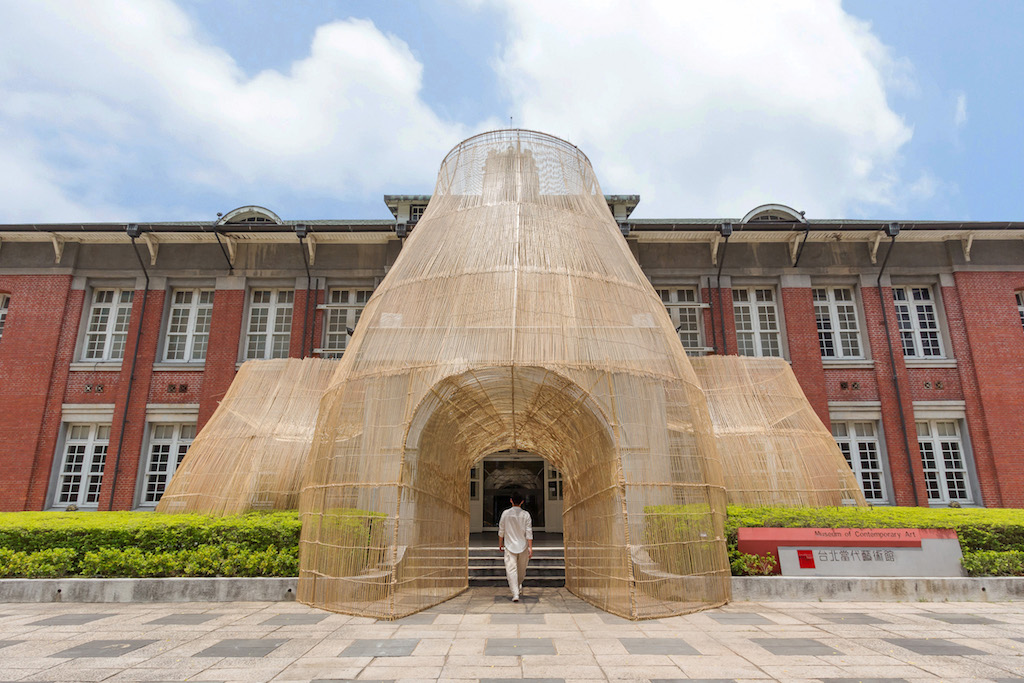
The Fish Trap installation in Nantou was inspired by the traditional crafts of the Thao indigenous tribe that lives near Sun Moon Lake, Taiwan’s alrgest body of water.
Who are some of the artists that you admire and why?
It’s a hard question. There are many outstanding artists in the world. But here, I’d like to choose two Japanese artists – Hajime Nakatomi and Hisako Sekijima – both of whom create woven basket art. I think Hajime Nakatomi does an excellent job with bamboo creation. On the other hand, Hisako Sekijima always works with natural fibre which she collects by herself. She has also created a delicate classification for various basket weaving methods.
You might also like:
Phoebe Says Wow architects designs Boolean birdhouse pavilion in remote Taiwanese mountains

